Papers by Jonathan Palero
The diagnosis of superficial cancers can be carried out with fluorescence techniques using excita... more The diagnosis of superficial cancers can be carried out with fluorescence techniques using excitation wavelengths in the UV and measuring the auto-fluorescence of tissues [1, 2]. However, the very limited penetration depth of UV light in the tissues has so far prevented the clinical application of such an approach. The use of NIR (which has a large penetration depth in tissues) and multi-photon excitation fluorescence enables the excitation of molecules having absorption bands in the UV at a high penetration depth.

Biomedical Optics Express, 2016
DOI to the publisher's website. • The final author version and the galley proof are versions of t... more DOI to the publisher's website. • The final author version and the galley proof are versions of the publication after peer review. • The final published version features the final layout of the paper including the volume, issue and page numbers. Link to publication General rights Copyright and moral rights for the publications made accessible in the public portal are retained by the authors and/or other copyright owners and it is a condition of accessing publications that users recognise and abide by the legal requirements associated with these rights. • Users may download and print one copy of any publication from the public portal for the purpose of private study or research. • You may not further distribute the material or use it for any profit-making activity or commercial gain • You may freely distribute the URL identifying the publication in the public portal. If the publication is distributed under the terms of Article 25fa of the Dutch Copyright Act, indicated by the "Taverne" license above, please follow below link for the End User Agreement:
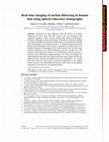
Biomedical Optics Express, 2015
Separation of skin epidermis from the dermis by suction blistering has been used with high succes... more Separation of skin epidermis from the dermis by suction blistering has been used with high success rate for autologous skin epidermal grafting in burns, chronic wounds and vitiligo transplantation treatment. Although commercial products that achieve epidermal grafting by suction blistering are presently available, there is still limited knowledge and understanding on the dynamic process of epidermal-dermal separation during suction blistering. In this report we integrated a suction system to an Optical Coherence Tomography (OCT) which allowed for the first time, real-time imaging of the suction blistering process in human skin. We describe in this report the evolution of a suction blister where the growth is modeled with a Boltzmann sigmoid function. We further investigated the relationship between onset and steady-state blister times, blister growth rate, applied suction pressure and applied local skin temperature. Our results show that while the blister time is inversely proportional to the applied suction pressure, the relationship between the blister time and the applied temperature is described by an exponential decay.
EMC 2008 14th European Microscopy Congress 1–5 September 2008, Aachen, Germany, 2008
ABSTRACT
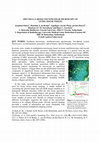
In recent years, studies in multiphoton microscopy based on tissue autofluorescence and second ha... more In recent years, studies in multiphoton microscopy based on tissue autofluorescence and second harmonic generation has steadily increased. Nonlinear microscopy is a general term for any microscopy technique based on nonlinear optics which include multiphoton microscopy (MPM), second- and third- harmonic (generation) imaging (SHG, THG), and coherent anti-Stokes Raman scattering (CARS) microscopy. Because MPM allows the excitation of UV transitions using longer wavelengths, it has the ability to image deep into optically thick specimens, while restricting photobleaching and phototoxicity. Second harmonic generation (SHG) is another promising contrast mechanism for microscopy on superficial tissues. For instance, collagen fibers are the predominant structural component of superficial tissues and exhibit a strong second harmonic signal (1, 2). Biochemical information from tissues can be obtained through autofluorescence spectroscopy. Tissue contains several endogenous fluorophores inclu...

Multiphoton Microscopy in the Biomedical Sciences VII, 2007
ABSTRACT The deep-tissue penetration and submicron spatial resolution of multi-photon microscopy ... more ABSTRACT The deep-tissue penetration and submicron spatial resolution of multi-photon microscopy and the high-detection efficiency and nanometer spectral resolution capability of a spectrograph were combined to study the intrinsic emission of mouse skin post mortem biopsy and section, and in vivo tissue samples. The different layers of skin could be clearly distinguished based on both their spectral signature and morphology. Auto fluorescence could be detected from both cellular and extra cellular structures. In addition SHG from collagen and a narrowband spectral emission band related to collagen were observed. Visualization of the spectral images in RGB color allowed us to identify tissue structures such as epidermal cells, lipid-rich keratinocytes and intercellular structures, hair follicles, collagen, elastin, and dermal fibroblasts. The results also showed morphological and spectral differences between the mouse skin post mortem biopsy and in vivo samples which explained by biochemical differences, specifically of NAD(P)H. Overall, spectral imaging provided a wealth of information not easily obtainable with present conventional multi-photon imaging methods.
Multiphoton Microscopy in the Biomedical Sciences VI, 2006
Interest in the development of optical technologies that have the capability of performing in sit... more Interest in the development of optical technologies that have the capability of performing in situ tissue diagnosis without the need for surgical biopsy and processing has been growing. In general, optical diagnostic techniques can be classified into two categories: (1) spectroscopic diagnostics and (2) optical imaging. Spectroscopic diagnostic techniques are used to obtain an entire spectrum of a single tissue
Multiphoton Microscopy in the Biomedical Sciences VI, 2006
Photonic crystal fiber as a tunable light source for visible wavelength two-photon microscopy. [P... more Photonic crystal fiber as a tunable light source for visible wavelength two-photon microscopy. [Proceedings of SPIE 6089, 60890T (2006)]. Jonathan A. Palero, Vincent O. Boer, Jacob C. Vijverberg, Henricus J. Sterenborg, Hans C. Gerritsen. Abstract. ...

Biophotonics and New Therapy Frontiers, 2006
ABSTRACT We combined a homebuilt multiphoton microscope and a prism-CCD based spectrograph to dev... more ABSTRACT We combined a homebuilt multiphoton microscope and a prism-CCD based spectrograph to develop a spectral imaging system capable of imaging deep into live tissues. The spectral images originate from the two-photon autofluorescence of the tissue and second harmonic signal from the collagen fibers. A highly penetrating near-infrared light is used to excite the endogenous fluorophores via multiphoton excitation enabling us to produce high quality images deep into the tissue. We were able to produce 100-channel (330 nm to 600 nm) autofluorescence spectral images of live skin tissues in less than 2 minutes for each xy-section. The spectral images rendered in RGB (real) colors showed green hair shafts, blue cells, and purple collagen. Analysis on the optical signal degradation with increasing depth of the collagen second-harmonic signal showed 1) exponential decay behavior of the intensity and 2) linear broadening of the spectrum. This spectral imaging system is a promising tool for both in biological applications and biomedical applications such as optical biopsy.

Laser Florence 2004: A Window on the Laser Medicine World, 2005
ABSTRACT We combined a non-linear microscope with a sensitive prism-based spectrograph and employ... more ABSTRACT We combined a non-linear microscope with a sensitive prism-based spectrograph and employed it for the imaging of the auto fluorescence of skin tissues. The system has a sub-micron spatial resolution and a spectral resolution of better than 5 nm. The spectral images contain signals arising from two-photon excited fluorescence (TPEF) of endogenous fluorophores in the skin and from second harmonic generation (SHG) produced by the collagen fibers, which have non-centrosymmetric structure. Non-linear microscopy has the potential to image deep into optically thick specimens because it uses near-infrared (NIR) laser excitation. In addition, the phototoxicity of the technique is comparatively low. Here, the technique is used for the spectral imaging of unstained skin tissue sections. We were able to image weak cellular autofluorescence as well as strong collagen SHG. The images were analyzed by spectral unmixing and the results exhibit a clear spectral signature for the different skin layers.
Biomedical Optics Express, 2011
An optimized system for fast, high-resolution spectral imaging of in vivo human skin is developed... more An optimized system for fast, high-resolution spectral imaging of in vivo human skin is developed and evaluated. The spectrograph is composed of a dispersive prism in combination with an electron multiplying CCD camera. Spectra of autofluorescence and second harmonic generation (SHG) are acquired at a rate of 8 kHz and spectral images within seconds. Image quality is significantly enhanced by the simultaneous recording of background spectra. In vivo spectral images of 224 × 224 pixels were acquired, background corrected and previewed in real RGB color in 6.5 seconds. A clear increase in melanin content in deeper epidermal layers in in vivo human skin was observed.

SPIE Proceedings, 2006
ABSTRACT The last two decades saw the emergence of spectroscopy and microscopic imaging as techni... more ABSTRACT The last two decades saw the emergence of spectroscopy and microscopic imaging as techniques for tissue diagnostics. The biochemical state of the tissue is revealed by spectroscopy, while the morphological information is visualized by microscopic imaging. Little research has been carried out to diagnose tissues based on the combination of spectroscopy and microscopic imaging. Here, we report on tissue spectroscopy and microscopic imaging employing two-photon excitation of tissue autofluorescence and second harmonic generation. We designed and constructed a prism-based spectral imaging system coupled to a two-photon microscope. Full emission spectra with a 1-7 nm spectral resolution covering 330nm to 600nm can be recorded at a maximum rate of 500 spectra per second equivalent to about 0.5 frames/min (224x224 pixels). We present results on spectral imaging of human skin sections and in-depth imaging of pig skin tissue. Different skin layers show clear differences in their intrinsic emission spectral signature that can be used for diagnosis.
5th IEEE Conference on Nanotechnology, 2005.
Imaging & Microscopy, 2009
ABSTRACT The deep tissue penetration of nonlinear microscopy and the high detection efficiency of... more ABSTRACT The deep tissue penetration of nonlinear microscopy and the high detection efficiency of a spectrograph are utilized to record spectral images of the intrinsic emission of living mouse skin tissues. Visualization of the spectral images by wavelength-to-RGB color conversion allowed identification and discrimination of tissue structures Nonlinear spectral imaging microscopy (NSIM) can provide a wealth of information not easily obtainable with present conventional nonlinear imaging systems.
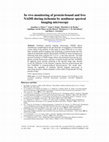
Biomedical Optics Express, 2011
Nonlinear spectral imaging microscopy (NSIM) allows simultaneous morphological and spectroscopic ... more Nonlinear spectral imaging microscopy (NSIM) allows simultaneous morphological and spectroscopic investigation of intercellular events within living animals. In this study we used NSIM for in vivo timelapse in-depth spectral imaging and monitoring of protein-bound and free reduced nicotinamide adenine dinucleotide (NADH) in mouse keratinocytes following total acute ischemia for 3.3 h at ~3 min time intervals. The high spectral resolution of NSIM images allows discrimination between the twophoton excited fluorescence emission of protein-bound and free NAD(P)H by applying linear spectral unmixing to the spectral image data. Results reveal the difference in the dynamic response between protein-bound and free NAD(P)H to ischemia-induced hypoxia/anoxia. Our results demonstrate the capability of nonlinear spectral imaging microscopy in unraveling dynamic cellular metabolic events within living animals for long periods of time.
Biomedical Optics Express, 2012
We present the implementation of a combined digital scanned light-sheet microscope (DSLM) able to... more We present the implementation of a combined digital scanned light-sheet microscope (DSLM) able to work in the linear and nonlinear regimes under either Gaussian or Bessel beam excitation schemes. A complete characterization of the setup is performed and a comparison of the performance of each DSLM imaging modality is presented using in vivo Caenorhabditis elegans samples. We found that the use of Bessel beam nonlinear excitation results in better image contrast over a wider field of view.
Photochemical & Photobiological Sciences, 2008
We demonstrate the capability of nonlinear spectral imaging microscopy (NSIM) in investigating ul... more We demonstrate the capability of nonlinear spectral imaging microscopy (NSIM) in investigating ultraviolet and visible light induced effects on albino Skh:HR-1 hairless mouse skin non-invasively.
Optics Express, 2005
We report on a novel and simple l ight source for shortwavelength two-photon excitation fluoresce... more We report on a novel and simple l ight source for shortwavelength two-photon excitation fluorescence microscopy based on the visible nonsolitonic radiation from a photonic crystal fiber. We demonstrate tunability of the light source by varying the wavelength and intensity of the Ti:Sapphire excitation light source. The visible nonsolitonic radiation is used as an excitation light source for two-photon fluorescence microscopy of tryptophan powder.
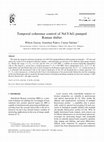
Optics Communications, 2001
We study the temporal coherence properties of a Nd:YAG pumped Raman shifter (pump wavelength 355 ... more We study the temporal coherence properties of a Nd:YAG pumped Raman shifter (pump wavelength 355 nm) and report the control of its temporal coherence length z c with hydrogen gas pressure P for dierent input pump energies E in. Within the range: 3:1 6 E in 6 6:5 mJ, and for: 0:41 6 P 6 4:83 MPa, z c exhibits an inverse hump-like dependence with P. The shortest z c occurs near a (critical) pressure P P c % 0:69 MPa, that is independent of E in. At P P c , the eight Stokes and anti-Stokes lines exist at their strongest in the Raman output spectrum. For P < P c , a sharp increase in z c is obtained with decreasing P due to the relative dominance of the 355 nm Rayleigh line in output spectrum. For P > P c , a slow increase in z c is observed with P due to the dominance of the second-order Stokes line and the weakening of the anti-Stokes lines that is caused by the deterioration of the phase-matching condition for four-wave mixing.








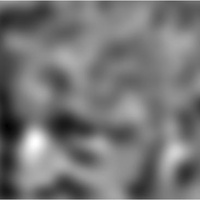


Uploads
Papers by Jonathan Palero